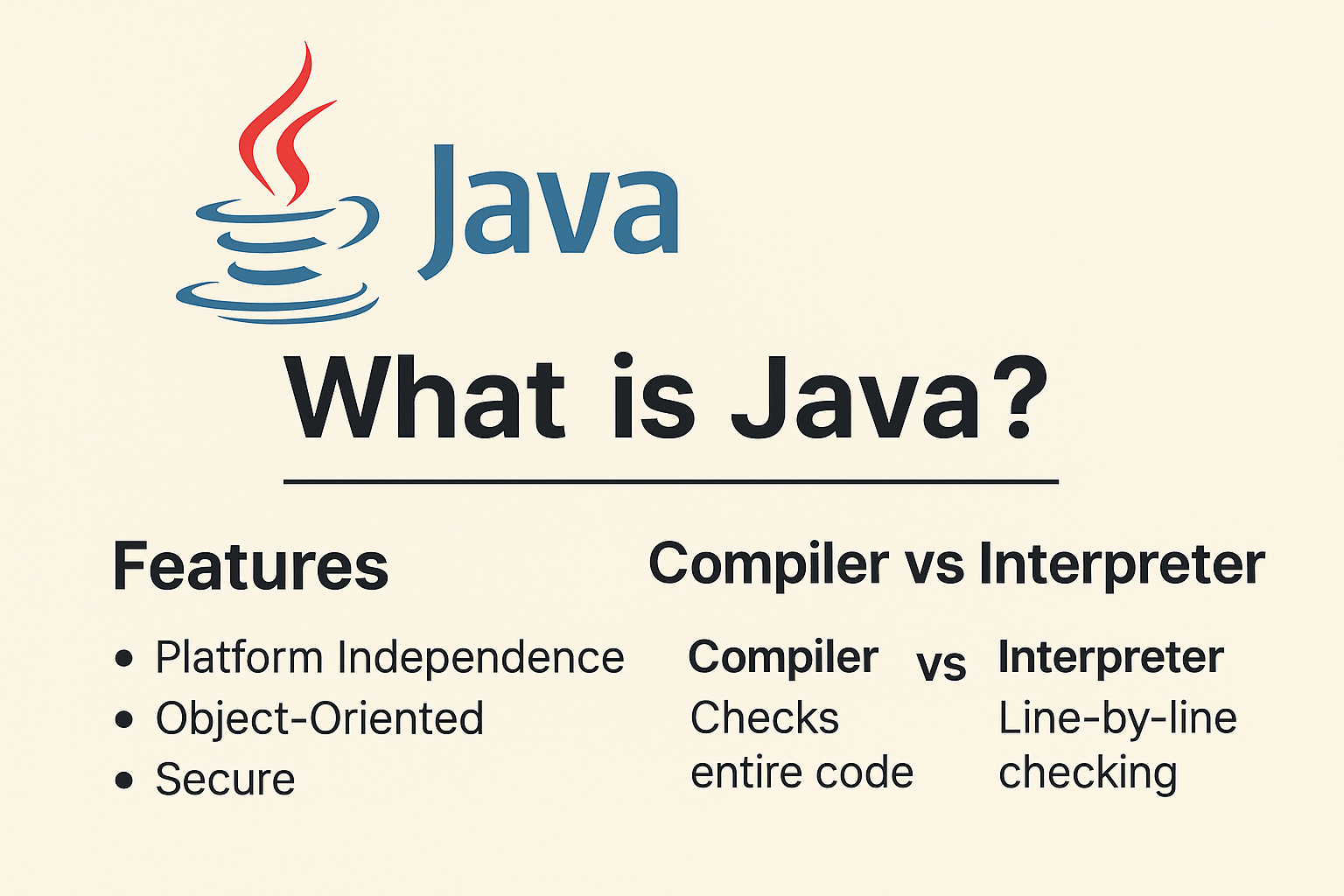Java is a high-level, object-oriented, and platform-independent programming language. It was developed by James Gosling and released by Sun Microsystems in 1995. Java is widely used in enterprise applications, Android development, and server-side software.
🔑 Key Features of Java
-
Platform Independent
Java code is compiled into bytecode, which can run on any platform via the Java Virtual Machine (JVM). -
Robust
Java includes memory management, strong type checking, exception handling, and automatic garbage collection—making it reliable and secure. -
Object-Oriented
Everything in Java is treated as an object. It supports core principles like abstraction, encapsulation, inheritance, and polymorphism. -
Portable
Java programs can be moved easily from one system to another and executed in a consistent environment. -
High Performance
Java supports multithreading, enabling concurrent execution and better resource utilization. -
Secure
Java avoids pointers, reducing the risk of unauthorized memory access and increasing application safety.
💬 Understanding the Basics
What is a Language?
A language is a medium of communication between two entities. In programming, it's how humans instruct machines.
What is a Program?
A program is a sequence of instructions written to perform a specific task.
🧠 Types of Programming Languages
-
Low-Level Languages
These are close to machine code and are easily understood by computers. Examples: Assembly, Machine Language. -
High-Level Languages
These are closer to human languages and easier to read and write. Examples: Java, Python, C++.
🛠️ Interpreter vs Compiler
What is an Interpreter?
An interpreter processes a program line by line. It moves to the next line only if the current line is error-free. Ideal for scripting languages.
What is a Compiler?
A compiler scans the entire program at once. It detects all errors before execution and generates bytecode if the program is error-free.
In Java:
- Source code (
.java) is compiled by the Java compiler into bytecode (.class) - The JVM interprets and runs this bytecode on any supported machine
